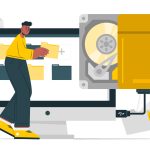- 21 June 2024
- by Andrej Fedek
- Blog, Business
- 0 Comments
The manufacturing industry, manufacturing efficiency, is one of the most important elements of being able to compete and, therefore, maximize profitability. Many factors significantly influence efficient manufacturing, with the most vital being the balance of the production line. Production line balance primarily refers to a mechanism used to distribute the workload across the industrial plant to prevent bottleneck occurrence during the operational hours, thus promoting smooth running.
This article will consider the significance of production line balance, the advantages, and how to succeed in achieving it. Additionally, we will elaborate on the importance of line balancing software in promoting efficient manufacturing.
Understanding Your Production Line
Effective balancing of a production line requires a full understanding of the various processes in its entirety. One, therefore, carries out a time study to establish how long on average various tasks on the production line take. Bottlenecks, which are the operations with the longest duration, are identified, and the manufacturer may determine their improvement priorities. Process capacity is also established to help determine if the line is overloaded or under-utilized.
Balancing Your Production Line
Principles of Line Balancing:
Line balancing involves allocating tasks efficiently to achieve optimal workflow. The principles of line balancing include ensuring that each workstation receives a balanced workload in terms of time and effort, minimizing idle time, and eliminating waiting time between workstations.
Finding the Optimal Balance Point:
Using mathematical techniques such as long-term manpower or mathematical modeling, manufacturers can identify the optimal balance point for their production line. This allows for the most efficient allocation of tasks, minimizing idle time and maximizing productivity.
Resolving Bottlenecks:
Bottlenecks are the limiting factors that hinder the overall efficiency of a production line. Identifying and addressing these bottlenecks systematically, through process redesign or technology implementation, is crucial to achieve a balanced and efficient production line.
Applying Line Balancing Techniques
Using Standardized Work:
Standardized work refers to creating a standard procedure for performing tasks consistently across workstations. This approach ensures that each operator follows the same instructions, reducing variations and promoting a more balanced and efficient production line.
Implementing Parallel Workstations:
Parallel workstations involve dividing a task between multiple operators, simultaneously performing different elements of the task. This technique helps distribute the workload evenly across the line, reducing bottlenecks and increasing efficiency.
Incorporating Cross-Training:
Cross-training employees to perform multiple tasks helps create a more flexible workforce. By having employees trained in various operations, manufacturers can quickly address workload imbalances caused by absences or shifting priorities.
Monitoring and Adjusting Your Production Line
Tracking Performance Metrics:
Monitoring performance metrics such as cycle time, throughput, and work-in-progress inventory allows manufacturers to identify areas of improvement. By collecting and analyzing data on a regular basis, production line imbalances can be detected, and appropriate adjustments can be made.
Identifying Opportunities for Improvement:
Regularly assessing the production line for opportunities to eliminate waste, reduce setup times, or optimize processes is essential for continuous improvement. Manufacturers should encourage employees to contribute suggestions and ideas for line balancing enhancements.
Continuously Optimizing Your Line Balance:
Achieving an optimally balanced production line is an ongoing process. As the manufacturing environment evolves, adjusting the line balance accordingly ensures that efficiency is maintained. Regularly revisiting and refining line balancing techniques and introducing new optimization strategies sets the foundation for sustained success.
The Benefits of Production Line Balancing
Increased Efficiency and Productivity:
By effectively balancing the production line, manufacturers can eliminate bottlenecks, reduce idle time, and minimize work-in-progress inventory. This leads to increased overall efficiency and higher productivity levels.
Improved Quality:
A balanced production line ensures that tasks are performed consistently and accurately, reducing variations and minimizing defects. Quality checks can be integrated into each workstation, resulting in fewer errors and rework.
Reduced Lead Time and Inventory Level:
A balanced production line improves the overall flow of operations, reducing lead time and work-in-progress inventory. This allows for faster response times to customer demands and reduces the capital tied up in excess inventory.
Line Balancing Software
What is Line Balancing Software?
Line balancing software is a tool that facilitates the analysis and optimization of production lines. It makes forecasts and calculates possible outcomes relying on the optimization possibilities manufacturers have. Hence, manufacturers can use software to find the most efficient balancing point, using the appropriate model and processes.
Advantages of software usage: It is based on the facts and using simulations. Software gives data and visualization support to tell them what to do. They can make “what if” conditions that help them consider and experiment with likely variations in a computer or simulation before doing in real life, which makes line balancing faster and mitigates risks.
Common Challenges and How to Overcome Them
Resistance to Change:
Resistance from employees, particularly when implementing line balancing techniques, is a common challenge. Communicating the benefits of line balancing, involving employees in the process, and providing training and support can help overcome resistance and foster a culture of continuous improvement.
Limited Resources for Implementation:
Manufacturers may face resource constraints when implementing line balancing techniques. By prioritizing improvements, seeking external support, and creatively utilizing available resources, companies can overcome limited budgets or manpower constraints.
Dealing with Unexpected Changes:
The manufacturing environment is dynamic, and unexpected changes can cause imbalances in the production line. Manufacturers should be agile and adaptable, regularly reviewing and adjusting their line balance to respond effectively to changes in demand, technology, or workforce.
Conclusion
Mastering production line balance is the key to optimized manufacturing. By familiarizing oneself with the principles and various techniques of line balancing, then reflecting on and comparing one’s understanding through the use of line balancing software like LineView and updating and refining one’s practices in line balancing through continuous monitoring and adjusting the line, manufacturers may achieve not only greater productivity, but better quality with reduced lead time.
At the same time, challenges remain, and understanding and managing them through communication, resource allocation, and flexibility are critical to continued success. In the end, a balanced production line helps manufacturers to best position themselves in a constantly changing environment, facilitate long-term growth, and profitability.
Thus, line balancing is a journey, not a destination. Manufacturers must develop a culture that encourages feedback and amplifies their employees’ voices in the line balancing process. Through the use of several methods and available software examples, the user can easily leverage this case study.

Andrej Fedek is the creator and the one-person owner of two blogs: InterCool Studio and CareersMomentum. As an experienced marketer, he is driven by turning leads into customers with White Hat SEO techniques. Besides being a boss, he is a real team player with a great sense of equality.




